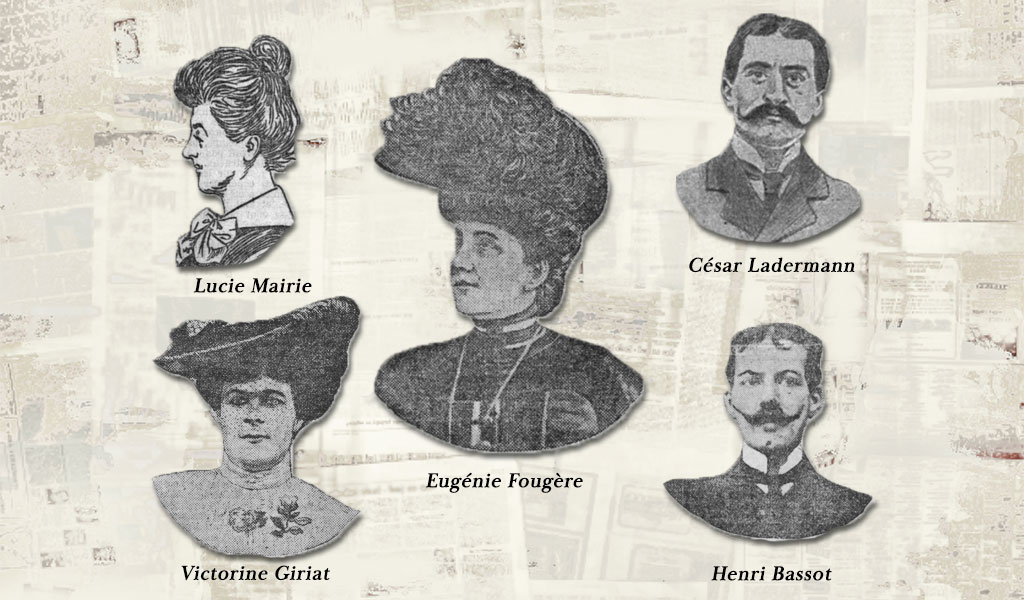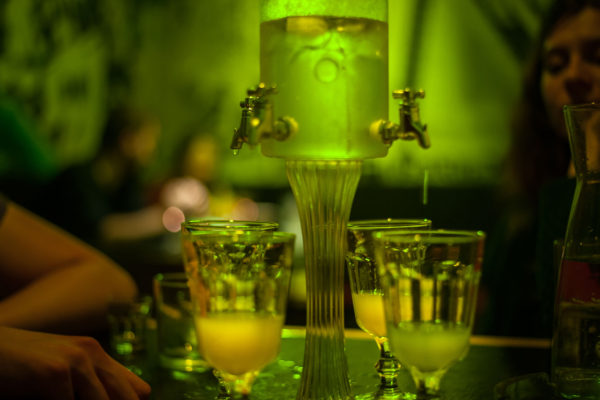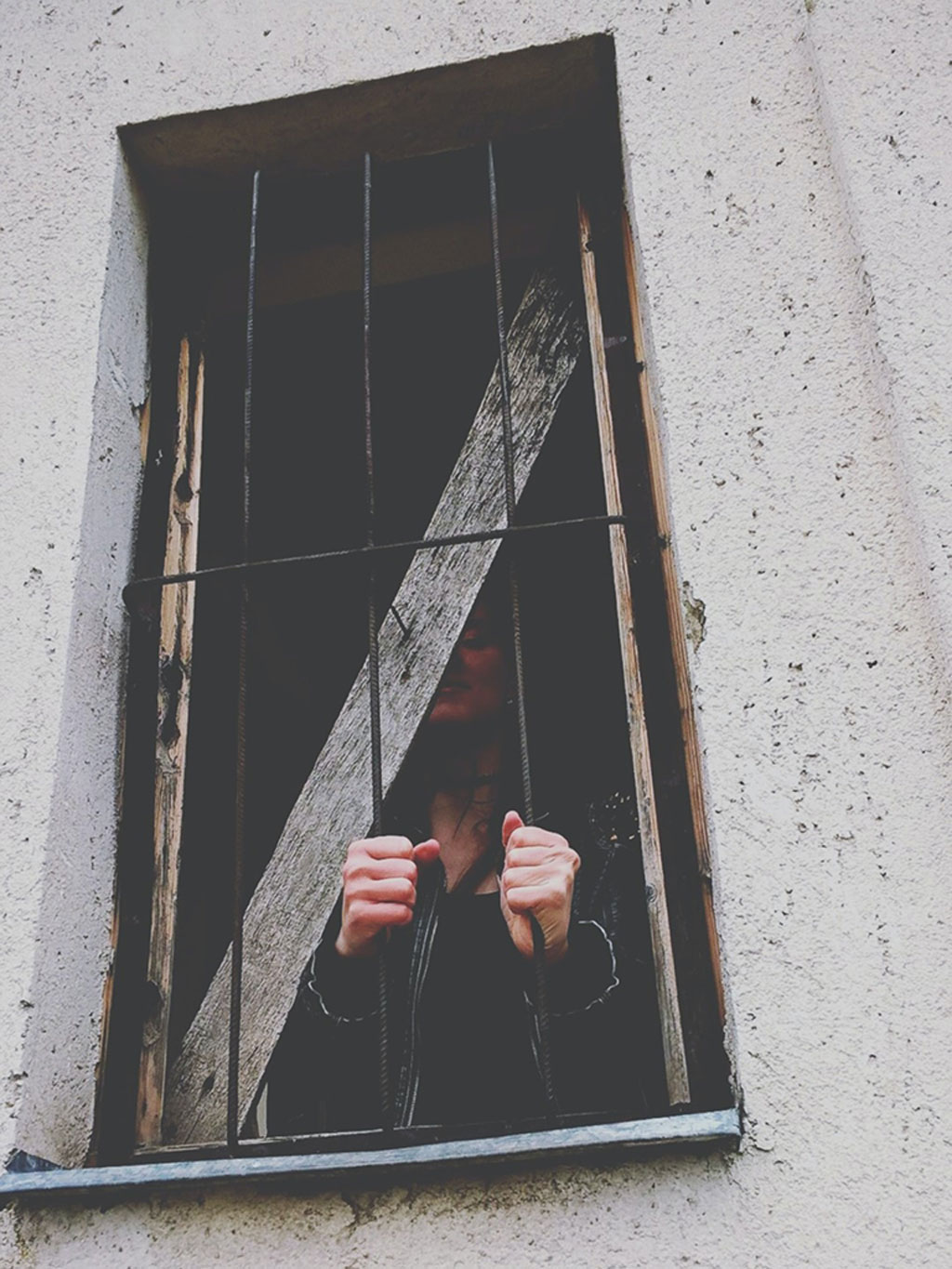
Prisoner in her bedroom for 25 years: the terrible reason why Blanche was locked up
On 23 May 1901, an anonymous letter was delivered to the Paris Attorney General. It said that a woman was being held captive by her mother, half-starved and in filthy conditions, and that she had been there for 25 years. Police in Poitiers were alerted and went immediately to the home of Madame Louise Monnier, named in the letter, demanding to see her daughter Blanche. After some resistance Louise Monnier directed them upstairs to Blanche’s locked room.
The police officers forced their way into the room. The first thing that hit them was the smell: an overpowering stench of faeces and rotting meat. Through the darkness they saw her lying on a straw mattress on the floor. A skeletal woman, naked except for a dirty bed sheet, with black hair grown down to her thighs, and long curved nails and toenails. Surrounding her was a crust of old food, excrement, insects and vermin. This was Blanche Monnier, 52 years old.
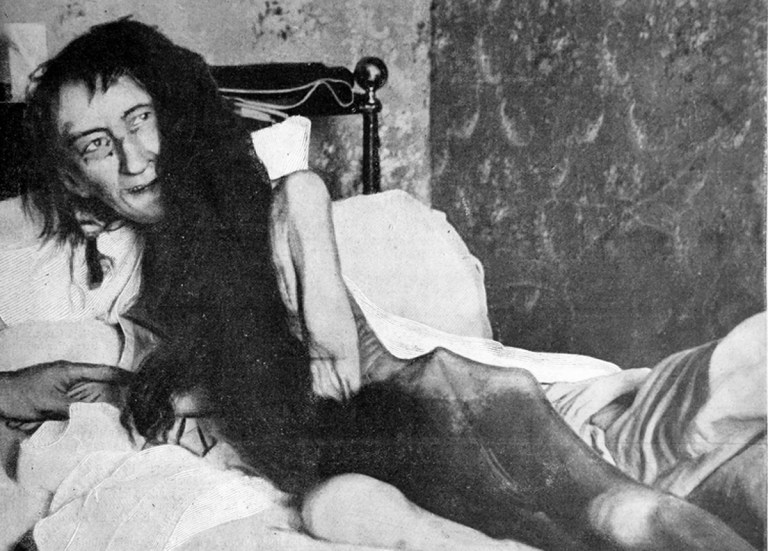
Blanche was taken to a hospital. Although dirty and painfully thin at just 25 kilos (55 lbs), there was no immediate physical danger to her life. Her mental condition was another matter. It was to be expected that she would be suffering from mental trauma after years of isolation and neglect but there was more to it than that. In the words of the time, Blanche was mad.
Blanche’s mother (75) and her brother Marcel (53) were arrested and charged with offences relating to Blanche’s imprisonment. Though Marcel didn’t live in the same house as his mother and sister, he lived in a house owned by his mother on the opposite side of the street and was known to visit the family home often. Just two weeks after her arrest, Louise Monnier died. She had been ill for some time and seeing the angry mob outside her home caused her health to fail further. Not that she felt any remorse for what she had done; she couldn’t understand why people were upset about her treatment of Blanche and reportedly said, “All this fuss for nothing”.
Blanche’s story was headline news across France, accompanied by the horrific image of Blanche on her arrival at the hospital. The public was outraged at the barbaric treatment Blanche had suffered at the hands of her own family. People wanted to know why this had happened and it wasn’t long before an explanation emerged. The story went that Blanche, a beautiful and happy young woman of 25, had fallen in love with a lawyer several years older than her. Blanche’s mother wouldn’t accept the match because he was penniless and a Protestant whereas the Monniers were of noble lineage and Catholic. To put an end the engagement, she imprisoned Blanche in her room, pretending to friends and family that she had disappeared.
Google Blanche’s story today and you’ll read the same version repeated in countless blogs, news sites and even the English-language Wikipedia page – a kind of Gothic fairy-tale of thwarted love in which a beautiful princess is held captive in a tower, waiting for the prince that will never arrive. These stories are usually illustrated with before and after photos comparing Blanche on her discovery with her as a young woman. The thing is that the “before” photos are not Blanche Monnier. The woman on the left is the American actress Maude Fealy, while on the right is an unknown woman dated 1914, a year after Blanche’s death aged 65.
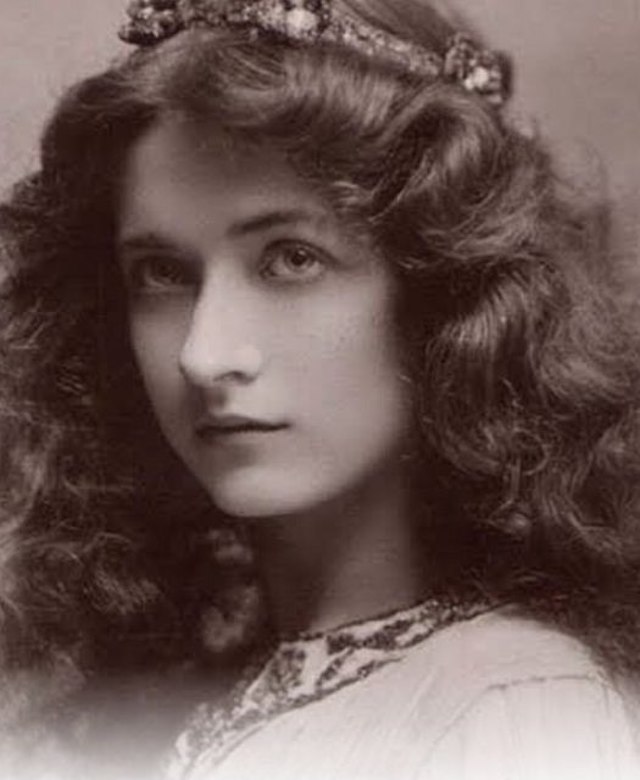
Maude Fealy 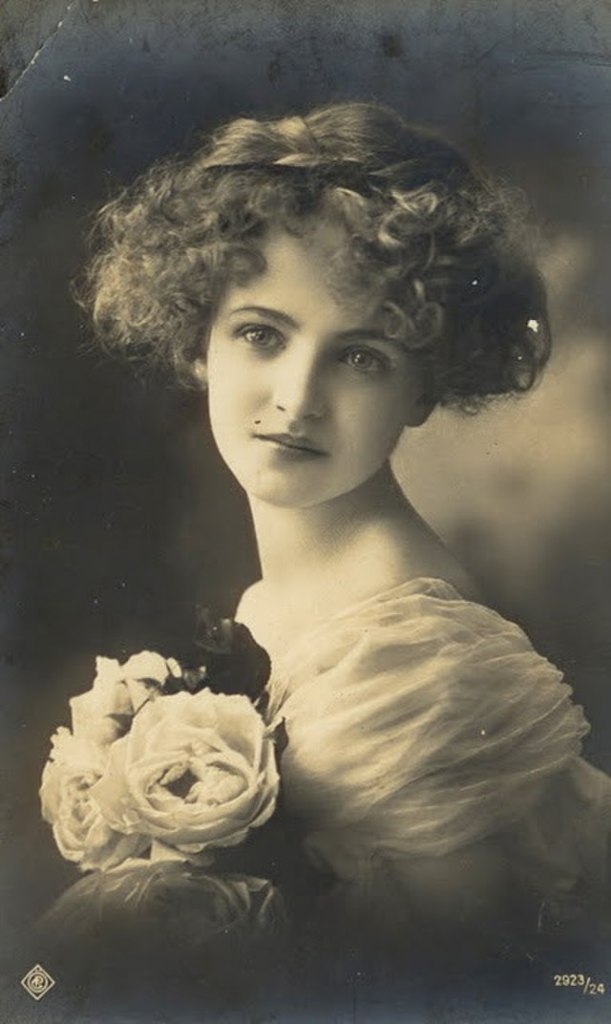
Unknown woman
So the photos are fake but what about the story, the one about the young lovers being kept apart? The lawyer may well have existed but his role in Blanche’s imprisonment was, to say the least, exaggerated. And in spite of the headlines about “a woman held captive for 25 years” there’s even a great deal of doubt about whether Blanche was held against her will. The story that emerged at the trial of Blanche’s brother, the one told by the maids and doctors who cared for Blanche during these 25 years of “captivity” is complicated. Blanche Monnier wasn’t Rapunzel, not was she Elisabeth Fritzl. The evil that was done to Blanche was more banal. The kind of wrongdoing that comes when people – many dozens of people – turn a blind eye or abnegate responsibility.
The mother
Louise Léonide Demarconnay was born in Poitiers in 1825, the daughter of a stockbroker. At the age of 22, she married Charles-Emile Monnier, an academic, who would go on to become the Dean of the University of Poitiers. They had two children: a son Marcel born in 1848, followed by their daughter Blanche a year later. By all accounts, Louise Monnier was a difficult woman to live with. She was nervous, highly strung, miserly and had poor personal hygiene. During Marcel’s trial, one maid testified that Madame Monnier wore the same dirty dress every day and another told the story of how that she complained that her children ate too much and ordered that they be served bread intended for the dog. To be clear, the family were comfortably well off. They owned a large town house in Poitiers, a home in the countryside and several other properties that were rented out. At the time of her death, Madame Monnier had 300,000 francs in her account.
Madame Monnier domineered both her husband and son but with Blanche it was different. She was more rebellious, challenging her mother’s rule. The two clashed frequently, with the arguments increasing in frequency as Blanche grew into a young woman.
The daughter
Blanche Monnier is said to have had a happy childhood, in spite of whatever difficulties arose out of the family dynamics. As she grew older, she became more interested in religion. For a time, she studied at the Christian Union and wanted to become a nun. It was during this period that Blanche began to have “mystical experiences” that caused her to crave solitude and she spent more and more time in her bedroom. She refused to eat, perhaps initially as a religious fast, but this became more serious until she developed anorexia. In 1872, at the age of 23, Blanche fell ill with a fever and took to her bed. Though the illness eventually passed, she never really returned to the world after this point.
It was clear that Blanche was suffering from serious mental health issues by now. She refused to wear clothes in the house and would stand naked at the window of her bedroom, visible from the street. (It was fear of this exhibitionism that led to her parents having Blanche’s bedroom window boarded up, hence the dark, prison-like room that the police found her in.) Blanche’s tormented mental state, interpreted as religious visions, could be more properly attributed to the schizophrenia that she was eventually diagnosed with.
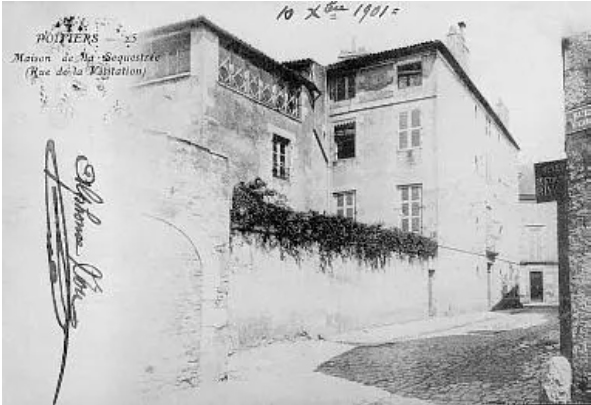
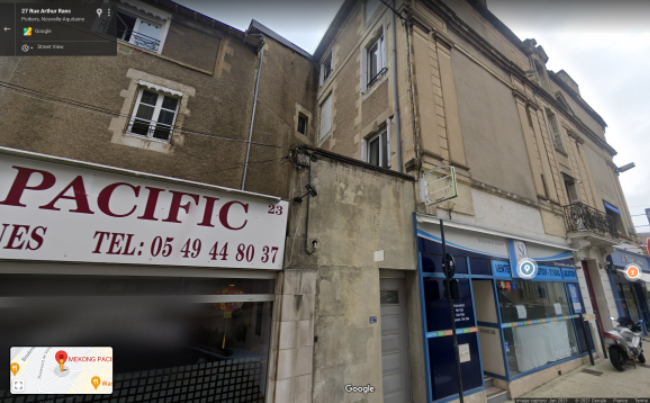
Doctors and nurses
Until her discovery in 1901, Blanche was under the care of three family doctors. Of these, Dr Guérineau would have been the one to make the initial diagnosis when Blanche fell ill as a young woman. After his death in 1882, a Dr Chedevergne took over as the family practitioner. In a statement to the court, he claimed that the last time he had seen Blanche was around 1896 when she would have been 47. This would have been the last time Blanche was examined by a doctor because in 1897 a third doctor, Dr Chiron, became Blanche’s mother’s doctor. Not only had he never seen Blanche, he wasn’t even aware that Madame Monnier had a daughter. In the opinion of the doctors, as told by the family and staff, Blanche was incurably mad.
Faced with this diagnosis, the Monniers decided against sending Blanche to a hospital or asylum. Without the statement of her parents, we can only speculate as to why they took this decision. Perhaps they kept her at home because they were fearful of the stigma attached to mental illness, or perhaps they believed that she would be better cared for at home (asylums in the nineteenth century didn’t have great reputations). Regardless of their reasoning, this decision, once made, was not to be revoked. Marcel Monnier said that, after his father’s death in 1882, and in spite of his repeated protestations, his mother would not hear of Blanche going into a hospital because it was against her dead husband’s wishes.
When Blanche first fell ill the Monniers hired a nurse, Marie Fazy, to look after Blanche. According to trial transcripts, she was either a devoted carer and the only person who could calm Blanche, or a drunkard. What cannot be disputed, however, is that Marie was Blanche’s companion for over 20 years, even sleeping in the same room with her, and that Blanche’s condition deteriorated after Marie’s death in 1896.
The brother
Outwardly at least Marcel Monnier was a respectable and responsible member of society. He studied law at the University of Poitiers, gaining a doctorate of law, then worked in local government. He was married to a Spanish woman “of noble birth” and they had a daughter, Marie-Dolores, who was engaged at the time of her father’s arrest, (sadly the scandal caused her fiancé to break off the engagement). All three lived opposite his mother on rue de la Visitation. His education, work and family marks him out as a decent, if unremarkable, man. It was during his trial that hidden aspects of his character were brought to light.
While Marcel had testaments to his intelligence and high moral standing, others painted him as weak-willed, naive and stupid. His inability or unwillingness to stand up to his mother was evident from his own and others’ testimonies. More bizarre was the claim that he was a coprophiliac. His former housemaid said that Marcel used a bed pan rather than the toilet, and that one time he carried a full bed pan into the living-room where his wife and daughter were sitting and closed the windows and doors so that they could better appreciate the smell. (Presumably this testimony was considered relevant because it showed his unusual attitude to faeces, which Blanches was covered in. It’s also worth noting that Blanche herself was diagnosed as being a coprophiliac.)
Marcel visited his sister regularly – almost on a daily basis – and would read to her from newspapers and magazines. This continued right up until the very end. So while he was doubtlessly an attentive brother in this regard, he was hugely negligent on a more basic level.
The trial
Marcel’s trial for complicity to violence began on 7 October 1901 and lasted five days. A great many people who had worked in the Monnier family home over the years testified in the trial. They were asked about Blanche’s condition, the cleanliness of her room and her ability to move around the home. From their testimonies, a picture emerged that diverged greatly from the narrative that had been told in the press and on the streets. Firstly, Blanche’s presence wasn’t a secret. Everyone who worked for the Monniers knew that Blanche was there and that she was ill. Secondly, she wasn’t locked in her room the throughout her confinement; she was able to visit other parts of the house and had continued to play piano for a time. Thirdly, a great many people swore that, for the twenty years that Marie Fazy cared for Blanche, she was washed and her room was clean.
Now, these testimonies should be understood in the context of Blanche being a very sick woman who would soil herself, rip her clothes off and destroy objects and furniture in her violent rages. (The court heard from a joiner who had been repeatedly to the house over the years to repair items in Blanche’s room including the door.) Blanche would not have been an easy patient to care for which is why, when her principal carer died five years earlier, things took a drastic turn for the worse.
The problem was that Louise Monnier, Blanche’s mother, had seemed to have washed her hands of her daughter by this point. Her husband had died over 14 years earlier and, with him, died Blanche’s last hope of having a person who was able to act on her best interests. Instead of replacing Marie Fazy with another nurse, Louise used a succession of maids – untrained young women who were entirely incapable of managing the needs of a very sick woman. In addition, they were expected to sleep in Blanche’s bedroom – not an appealing prospect – and many left after a very short time.
Louise Monnier made the situation still worse with her miserly behaviour. One maid told of how she requested clean nightshirts and bed sheets from the linen cupboard for Blanche, who was incontinent at times, only to be refused. Louise said that Blanche would only rip them or get them dirty again. With her mother’s refusal to hire proper carers, or provide for her daughter’s needs, it is little wonder that she ended up in a pitiable state.
Blanche’s condition had degraded 1899 when Louise entrusted two new housemaids, Juliette Dupuis and Eugénie Tabeau, with Blanche’s care. Once again they were young, inexperienced and had difficulty getting their patient to cooperate. Blanche’s mother didn’t actively participate in her care; it is unclear whether she even visited her daughter at this point. Her brother Marcel continued to read to Blanche in her room. When questioned as to whether her room was clean, his response was contradictory. He claimed that it was in an acceptable state while going on to say that he petitioned his mother to remove her to a hospital – something she denied each time. Marcel didn’t have the force of will or legal standing to get Blanche out of the house. He was, in effect, waiting for his mother to die before acting.
As it happened, Louise’s declining health was the catalyst for Blanche’s eventual discovery. Six weeks prior to the police’s intervention, Louise became ill to the point where she could not give orders to her staff – and Marcel was too fearful to take up the role himself. Whether through ignorance or laziness, Blanche was not given the care she needed. She was left lying on a filthy straw mattress covered in her own waste, rotten food and vermin. It was seeing her in this appalling condition that finally compelled someone to act. Though it is still uncertain who, it is probably that one of the new maids told a soldier boyfriend about Blanche, and he wrote the anonymous letter alerting the authorities.
Marcel was found guilty and sentenced to 15 months in prison but immediately appealed the verdict. His lawyers argued that, as legal guardian and owner of the house, it was Louise who was responsible for Blanche’s condition, not Marcel, and that he was not required under law to intervene. (There was no “good Samaritan” law at the time in France.) The appeal was successful and Marcel was freed in November 1901.
The truth
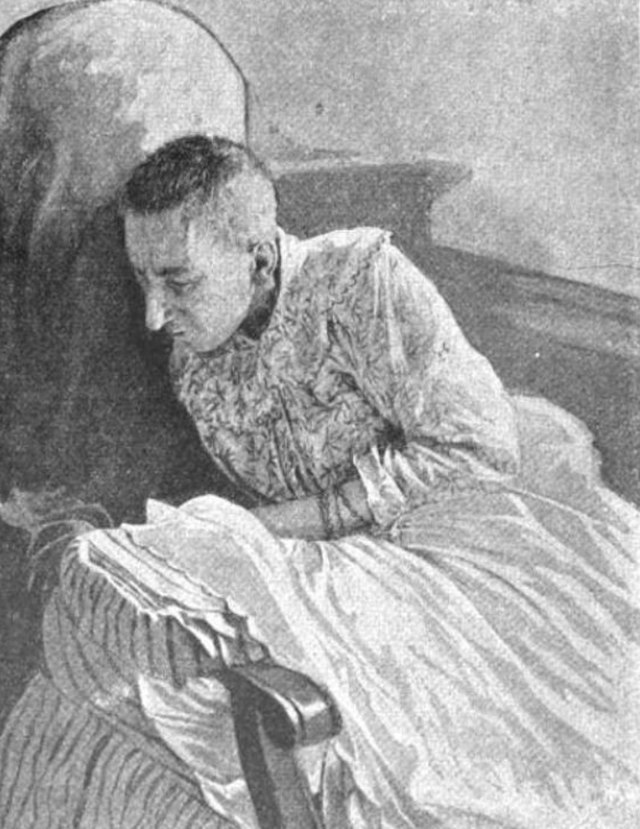
Marcel sold the various properties he had inherited from his mother and moved away to the coast. Blanche remained in a psychiatric hospital in Blois for the rest of her life. Though well cared for, she continued to suffer from the mental illnesses that had troubled her throughout her adult life. Both Blanche and Marcel died in 1913.
In 1930 André Gide used Blanche’s story as the basis for his novel La Séquestrée de Poitiers. In his book a young woman is held captive by her mother because of a love affair that the family did not approve of – a version reminiscent of the rumours about Blanche and the Protestant lawyer that persist today. It’s interesting that we choose to retell this “thwarted love” story. Though in this version an innocent Blanche suffers for 25 years, it is somehow easier to digest because there is an explanation and a single identifiable villain. We can imagine a world in which Blanche would be rescued and freed earlier by a passing policeman, for example.
The reality is much harder to accept. Blanche was failed by many people: her parents bear most responsibility certainly, but many others (her brother, her doctors, her hired carers) were aware of her situation and chose not to put an end to it. We like to think that, in their place, we would stand up and say something. Telling Blanche’s true story forces us to consider the possibility that we too would look away.
SOURCES
I first read about Blanche on the English Wikipedia page which gives a very basic and, in my opinion, inaccurate portrayal of the case. The French Wikipedia page reports the different interpretations of Blanche’s case to a degree. I also read newspaper reports of the crime and trial on RetroNews.fr. By far the most useful source, aside from the newspapers, was this website which puts forward the arguments as set out in the book L’Histoire véridique de la séquestrée de Poitiers by Jean-Marie Augustin (Fayard).



